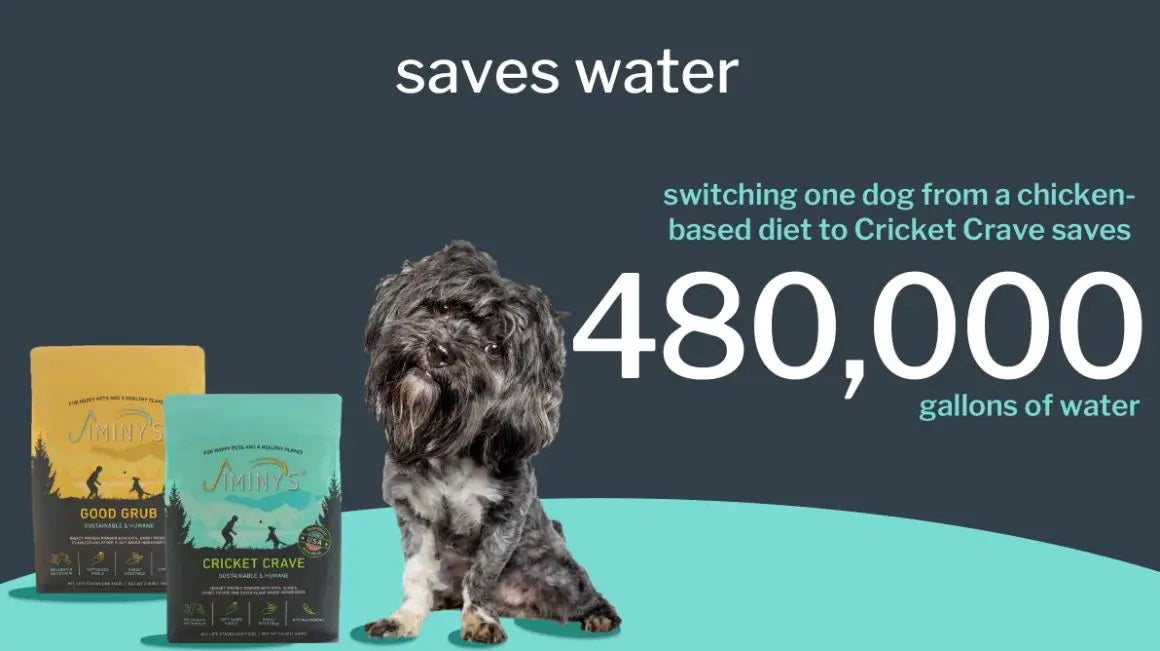
You’ve probably seen the quote from Richard Branson, “There is no planet B. We have to take care of the one we have.” We don’t know what the future holds, but we do know that scientific research shows that our planet is in crisis. Sustainable living is the key solution to this crisis. The definition of sustainability outlines what we need to do – “avoidance of the depletion of natural resources in order to maintain an ecological balance”.
At Jiminy’s, we believe that we can fight climate change by making better choices. Even small changes (like ditching a plastic straw) can, in aggregate, make a difference. We can make better choices, not only for ourselves but also for the rest of our family – including our furry kids!
Give Sustainably
So, when we think about sustainability, we are focused on land use, water use and greenhouse gas emissions produced from producing the protein in our pet’s food. Others are focused on areas like transportation, energy, better hard goods (leashes, toys, etc) with solutions like bamboo and hemp.
We decided that food is a big problem and something that we can actually improve. In fact, according to a UCLA Study, cats and dogs are responsible for 25 to 30% of the environmental impact of meat consumption in the US.
So, at Jiminy’s, we replace traditional animal protein with cricket protein. Cricket protein uses exponentially less land, emits almost no greenhouse gases and requires less water. In fact, if you switch a dog from a chicken-based diet to a cricket-based diet you and your dog will save 480,000 gallons of water per year. Just one dog – talk about impact!

The land savings are worth a look too. Cricket farming is close to ideal. There’s no need for acres and acres of grassland. A cricket barn is self-contained and there’s no waste runoff to foul groundwater. Looking forward, insect farms have the ability to be placed within a city and can go vertical too, so the footprint is extremely efficient and sustainable.

Traditional proteins sources produce huge amounts of methane. With crickets there’s almost no methane produced (a far worse greenhouse gas than CO2). This is where you really see us fighting climate change with this solution.

Give Humanely
Most traditional animal agriculture is brutal – terrible living conditions, short life and terrible end of life slaughter. If you can get the same nutrition but in a humane way, why not choose kindness?

When we talk about cricket farming we explain that it is a humane source of protein because of the way that the insects are raised, the amount of their natural life lived and the way they’re harvested.
Crickets are naturally a swarming species, and like being in a dark, warm place. They’re raised in cricket condos (inside barns) which allow the crickets to live in a way as close as possible to how they would live in the natural world. They are free to hop from feed station to feed station, and can burrow deep into the condos if they choose.
Harvesting time comes near the end of their natural life cycle – which is approximately 6 weeks. This comes after they have mated and laid their eggs. At the end, temperature is lowered and they go into a hibernation-like state before they’re harvested.
We hope you'll join us this holiday season and beyond! We're in this together. We hope you have a Pawsome Howliday Season!

